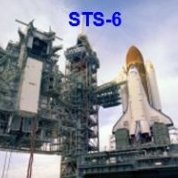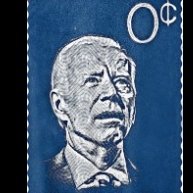-
Content Count
2,917 -
Joined
-
Last visited
About spaceman
-
Rank
Life Member (Mon-Key Handler)

Profile Information
-
Gender
Male
-
Location
Germany, Filderstadt
Recent Profile Visitors
-

Construction of the Space probe for NASA's Psyche Mission
spaceman replied to spaceman's topic in Real Space Modeling
Hello everybody, and on we go with the tricky DSOC Flight Laser Transceiver, today with its front, which I first transferred to transparent paper, to pierce the corner points onto the aluminum foil Blanket. As one can see already from the previous image, the artificial light is a problem when taking photos which is why I always have to adjust the brightness of images first that are sometimes too dark. That's why I used a small tripod and didn't take the photo against the lamplight, but once aga -

Construction of the Space probe for NASA's Psyche Mission
spaceman replied to spaceman's topic in Real Space Modeling
Hello everybody, so I took a closer look at the DSOC Flight Laser Transceiver. In the NASA model it looks like this, as it was to be seen many times before. This is an image from End of September 2023 , shortly before the start of the mission, which shows the arrangement of the spacecraft on the Payload attach fitting, Source: NASA/JPL-Caltech via which the spacecraft was connected in the protective payload fairings to the tip of the Falcon-9 Heavy with the rocket. Source: flickr.com In this -

Space Shuttle Launch Pad 39A with Challenger STS-6 (1:144)
spaceman replied to spaceman's topic in Real Space Modeling
Hello friends, meanwhile I have inquired about John's grave at Riverview Memorial Gardens in Cocoa and a staff member will direct me to it so I can do honour to him during my vacation in October. FOREVER REMEMBERED ... -

Space Shuttle Launch Pad 39A with Challenger STS-6 (1:144)
spaceman replied to spaceman's topic in Real Space Modeling
Mike, it's really sad and I deeply miss him. For 25 years he knew both Launch pads 39A & B like the back of his hand. In 2000 John began his media career covering rocket launches and various space-related events with Atlantis' mission STS-106 (09/08/2000). Since then he developed an impressive encyclopedic knowledge of the American space program. That's why his outstanding Website is a treasure trove for Real Space modelers like you and me. His 360° panoramas have actually always inspired me anew to look for more details to scratch, which -

Space Shuttle Launch Pad 39A with Challenger STS-6 (1:144)
spaceman replied to spaceman's topic in Real Space Modeling
Hello friends, today I have to deliver sad news to all friends of Real Space Modeling. As I just found out, my long-time friend, John O'Connor, is the brilliant creator of the 360° panoramas on the nasatech.net website, passed in May at the age of 75. I had just emailed him that I was coming back to Florida and to the KSC in October to meet with him, and I was surprised that he didn't reply. Unfortunately, we weren't able to meet up last year during NASA's Psyche Mission launch. Now his death is a sad certainty. May he rest in peace ... -

Construction of the Space probe for NASA's Psyche Mission
spaceman replied to spaceman's topic in Real Space Modeling
Hello everybody, first to cut out the 14 modules, which was again a pure game of patience. Then I also separated the Blanket at the interface to the Panel rods system. Then the edges were colored black. This was followed by the structuring of the modules, partly with the Pigment Liner, or just with a fine needle, as can be seen in this image. And just for testing, the modules were placed on the Blanket, what doesn't look bad at all. Gluing it -

Construction of the Space probe for NASA's Psyche Mission
spaceman replied to spaceman's topic in Real Space Modeling
Hello everybody, the procedures are familiar from the right side, i.e. first the marking of the tape strips and their attachment at the blanket. After this stressful puzzle work, it was time to determine the dimensions of the modules again, which I first have drawn on cardboard (0,5 mm), only this time on the left side there are 14 modules, which I have checked off in green on my template so that I don't lose track and none are forgotten. Then all modules were cut out, and placed on the temp -

Construction of the Space probe for NASA's Psyche Mission
spaceman replied to spaceman's topic in Real Space Modeling
Hello everybody, so let's get to work on the tricky gluing of the blanket bottom part on the right side wall. Thereto I turned the probe over and weighted it down with copper blocks on a suitable Styrofoam base and additionally fixed it. When gluing the blanket, the UHU Flinke Flasche with the wide spreading surface was used again. With a little skill, the lower part was glued to the dividing line below the panel holding system almost perfectly right away. To correct the position, I quickly picked up the p -

Construction of the Space probe for NASA's Psyche Mission
spaceman replied to spaceman's topic in Real Space Modeling
Hello everybody, and therefore I have optimistically configured the relevant modules on the lower part of the blanket in the same way. When gluing the four-part-module I had to take into account that it had to have a little overhang, which I did by eye based on the 1:1 template. The coordinates of the other five modules were then measured and glued oriented to distance markers, as well as briefly aligned. Thus, the lower part of the right blanket was al -

Construction of the Space probe for NASA's Psyche Mission
spaceman replied to spaceman's topic in Real Space Modeling
Hello friends, well, there are only two options for this, either horizontally, above the rod system, or vertically, next to the rod system, although I opted for the horizontal separation. Then I've glued the modules couple directly above the dividing line, whose position I fixed with the two rulers. The small module was glued to the right. Then came the tricky task of gluing the upper part to the right side wall, for which the probe had to be firmly fixed all around to the balsa base so that nothin -

Construction of the Space probe for NASA's Psyche Mission
spaceman replied to spaceman's topic in Real Space Modeling
Hello everybody, for comparison, here is the right side of the solar probe as it currently looks in the Paper Kit. Although a number of modules are indicated on it, they do not match the original in terms of design, size or arrangement, which is why I have tried to depict these details on the right side in a more realistic way. Source: NASA The difficulty, however, is that the photos are usually somehow distorted in perspective in some way, which makes determining the dimensions of details, such as these modules, particularly di -

Construction of the Space probe for NASA's Psyche Mission
spaceman replied to spaceman's topic in Real Space Modeling
Hello everybody, next we carry on doing with the insulating blanket for the right side of the solar probe. In order to have more freedom of movement when gluing the black blanket paper and to get better access to the side surface of the probe, I first had to think of a suitable jig for holding the probe, so that the solar panels would not be damaged. Then I also did a test of gluing crumpled black AE paper and aluminum foil to make sure that the gluing would hold when gluing it to the probe wall and that nothing would go wrong. Fo -

Construction of the Space probe for NASA's Psyche Mission
spaceman replied to spaceman's topic in Real Space Modeling
Hello everybody, so let's get to the backs of the solar panels, which will hardly be visible on the finished model, but would be a blemish so 'nacked' as before. I hadn't wanted to cover them up until now so as not to increase the weight of the panels unnecessarily, which could probably lead to the probe letting its "wings" droop. To prevent this effect as much as possible, I first copied the top of the Paper Kit Panels onto thin paper (60 g/m2) and have cut it out. To glue the undersides, I first had to look for Styrofoam parts with suitable -

Construction of the Space probe for NASA's Psyche Mission
spaceman replied to spaceman's topic in Real Space Modeling
Hello everybody, the blanketing of the probe with the insulating blankets continues, where today it was the turn of the back, on which there are not as many details as was already seen in the last post. In addition to the X-Band Low Gain Antenna and the two Multispectral Imagers, which should be comparatively easier to scratch-build, the two complex Hall-effect Thrusters (SPT-140) are far more difficult details, as can easily be seen in this true-scaled NASA model. In contrast, this is a highly simplified model representation tha -

Construction of the Space probe for NASA's Psyche Mission
spaceman replied to spaceman's topic in Real Space Modeling
Hello friends, next we go with the insulating blankets made of crumpled aluminum foil for the front and back of the space probe, with the recesses for the two engines (Hall-effect thrusters), which I want to at least indicate in a simplified form. Then came the cutting of the parts for the bottom side from crumpled AE paper, as well as from aluminum foil for the inner coupling adapter, which I then glued under the black blanket. Then I created a true to s





